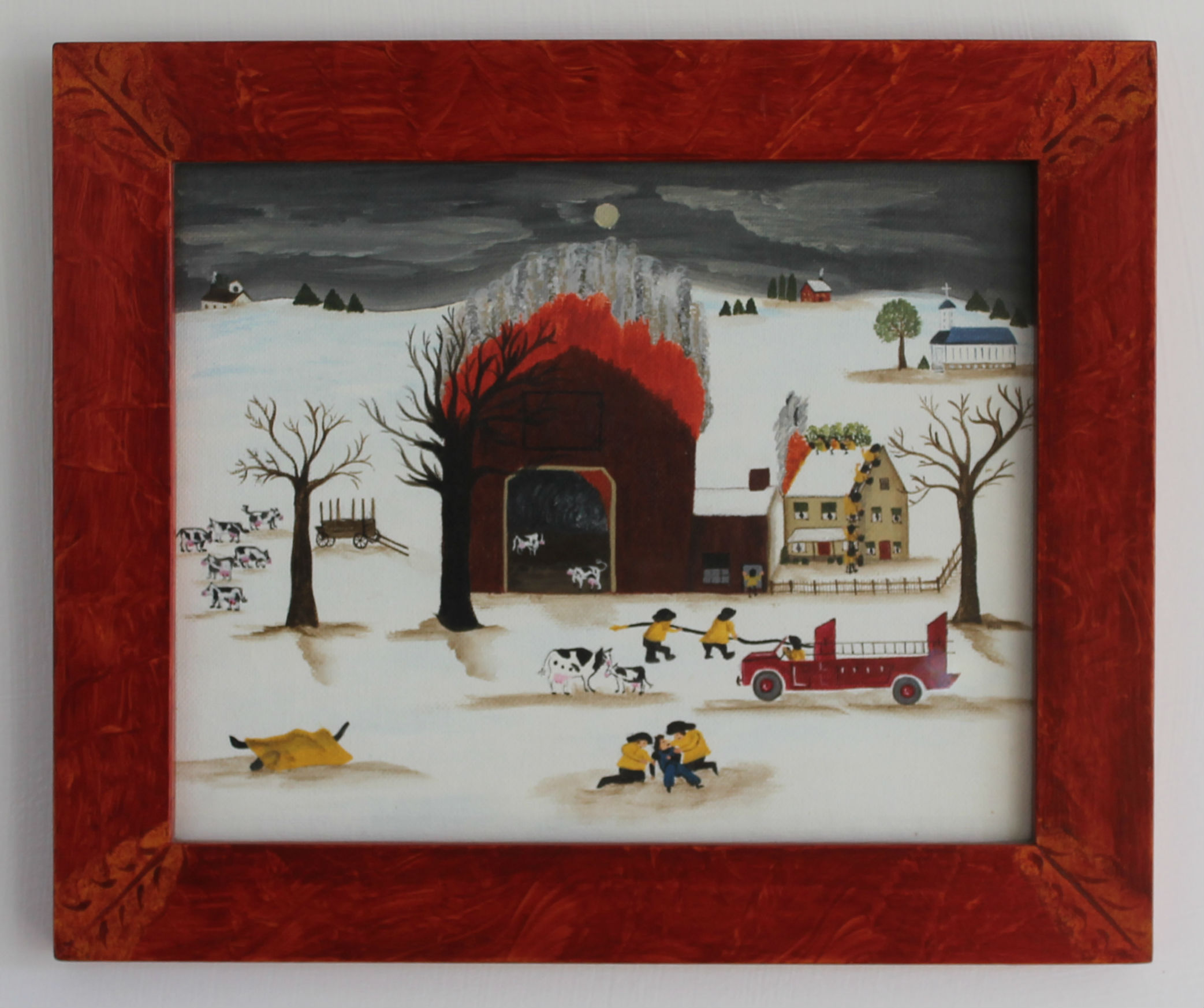Dr. Eleanor McQuillen’s Crime Scene Painting Smoke Rings, Death Calls
“The fire doesn’t usually kill you, the smoke does,” was an admonition my mother oftentimes shared after she returned from a fire-related death. Since I was the denser of her children, she would usually telegraph her message to me with more detail. “Today I had a young man who went back into a burning house to retrieve new skis. They found him by the window with the skis in his hand. The fire never even got to him. It was the smoke inhalation.” I am thinking this painting was just one more attempt to drive the point home, especially since my initial response to her was, “Don’t worry mom, I don’t have new skis.”
In this crime scene painting, firefighters respond to one victim in the center foreground while the remains of another victim lay under a tarp in the lower left corner. My mother clearly found inspiration in Tella Kitchen’s The Tragic Fire at Bucks Stables, Independence Indiana. While the crime scene is imposed into Tella’s composition, my mom introduced her own Vermont details, such as the dairy cows. The placement of a cow attending to a calf in the foreground is interesting. Was this placement a compositional concern or is it maternal messaging?
The wavy shadows cast by the fire and the full moon offer a nice touch of drama. She adds another local detail by including her church in the upper right corner. Since she is typically straightforward in her renderings, I am not sure what to make of the green tree in front of the church. It stands in stark contrast to the leafless trees by the burning barn and the snow covered ground. Is this a reference to the church’s promise of everlasting life? Normally I would think not, but the tree does reinforce the diagonal line between the victim, the fire and the cross on the church’s steeple.
This frame is particularly interesting in the way it picks up the color of the fire and the wavy, erratic pattern suggests the shimmering of firelight.
Next week’s crime scene painting plays with perspective in Cold Dread, Frozen Dead.
Adopt a detective’s perspective when looking at this painting and use three simple questions to frame a class discussion.
- What is going on in this picture?
- What do you see that makes you say that?
- What more can we find?
Decide if and when to share the title of the painting as it may guide, or overly influence, the way students view the work. You will also need to decide if it is beneficial to share the back story that this is a crime scene painting and is painted by one of the crime scene investigators for her child as a way to share life’s thoughts and lessons.


Comments are closed, but trackbacks and pingbacks are open.